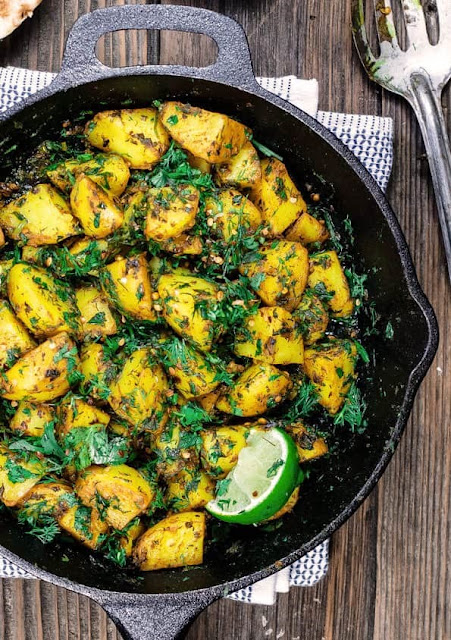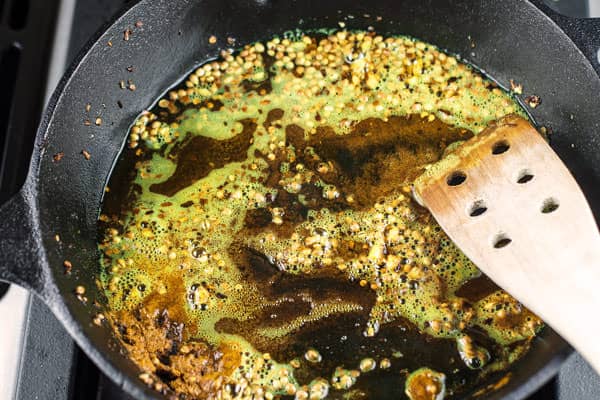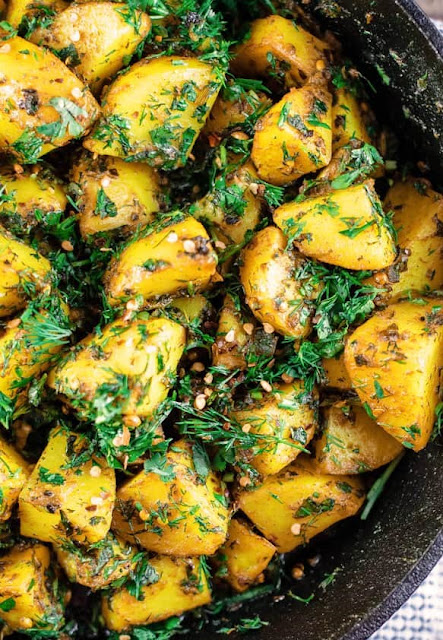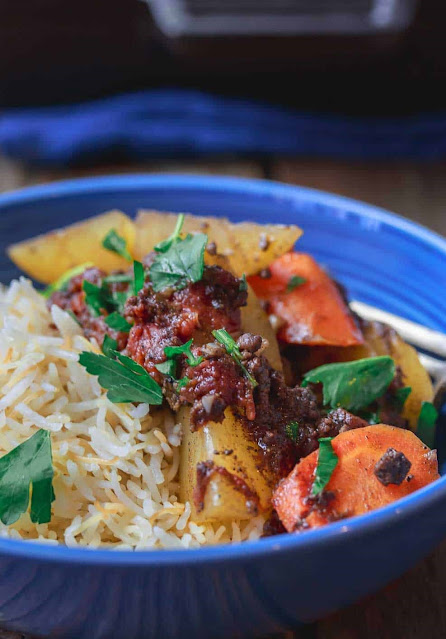- 1 4 to 5 lb leg of lamb, bone-in, fat trimmed
- Salt and pepper
- Extra virgin olive oil
- 5 garlic cloves, peeled and sliced; more for later
- 2 cups water
- 8 gold potatoes, peeled and cut into wedges
- 1 yellow onion, peeled and cut into wedges
- 1 tsp paprika; more for later
- 1 tsp all-natural garlic powder
- Fresh parsley for garnish, optional
FOR THE RUB:
- 15 garlic cloves, peeled
- 2 tbsp dried oregano
- 2 tbsp dried mint flakes
- 1 tbsp paprika
- 1/2 tbsp ground nutmeg
- 1/2 cup olive oil
- 2 lemons, juice of
INSTRUCTIONS
- Take the leg of lamb out of the refrigerator and leave in room temperature for about 1 hour. In the meantime, prepare the remaining ingredients and make the lamb rub.
- To make the rub, in a food processor, combine the rub ingredients. Blend until smooth. Set aside (or in the fridge, if preparing in advance).

4. Turn the oven on broil. Place the leg of lamb on a wire rack; place the rack directly on the top oven rack so that it's only a few inches away from the broiler element. Broil for 5-7 minutes on each side or until the leg of lamb is nicely seared. Remove from the oven, then adjust the oven temperature to 325 degrees F.

5. When the lamb is cool enough to handle, insert the garlic slices in the slits you made earlier. Now cover the leg of lamb on all sides with the wet rub and place it in the middle of a roasting pan with an inside rack. Add two cups of water to the bottom of the roasting pan.Season the potato and onion wedges with the paprika, garlic powder and a little salt, then add them to the pan on either side of the lamb.
6. Now tent a large piece of foil over the roasting pan (make sure it does not touch the lamb) then place the pan on the middle rack of the 325 degrees F heated-oven. Roast covered for about 1 hour. Remove the foil and return the roasting pan to the oven for another 10 to 15 minutes or until the lamb temperature registers 130 degrees F for medium-rare.
7. Remove the pan from the oven and let the leg of lamb rest for about 15 minutes before serving (the lamb will continue to cook and it's internal temperature will continue to rise.
8. Place the lamb and potatoes in a large serving platter over a bed of rice, if you choose to. Garnish with parsley.Or, you may carve the lamb first, then arrange the sliced lamb with the potatoes over the rice. Enjoy!
NOTES
- Tip for buying: When you purchase ask the butcher to trim the fat.
- How long to roast? Avoid overcooking. The following is a quick guide for cooking at 325 degrees F (and remember that with the resting time, the lamb will continue to cook and its internal temperature will rise): Rare: About 15 minutes per pound or until internal temperature registers 125 degrees F. Medium-Rare: About 20 minutes per pound or until internal temperature registers 130°F to 135°F. Medium: About 25 minutes per pound or until internal temperature registers 135°F to 140°F. Well-Done: About 30 minutes per pound or until internal temperature registers 155°F to 165°F.
- Storage and freezing instructions: Leftover lamb roast will keep in the fridge for 3 days or so. Just be sure the lamb has cooled before transferring to tight-lid glass containers to refrigerate. You can also freeze cooked lamb leg. I typically carve remove the bone and store the lamb in freezer-safe containers or zip-top bags for up to 2 months or so. Thaw overnight in the fridge. Reheat in the oven, covered, with a bit of liquid in the baking pan.




























